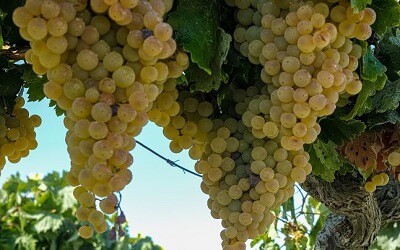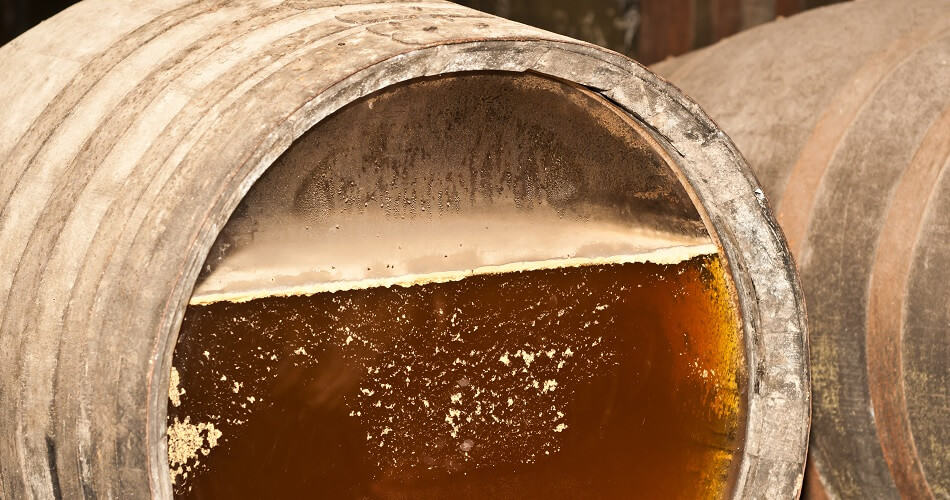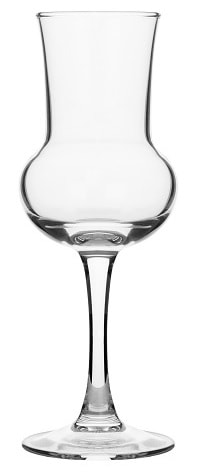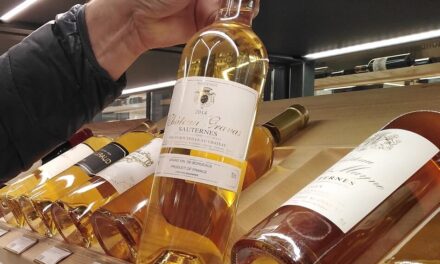Spain is the home of great food and fantastic wines, including some of the world’s best fortified wines. One of the most popular but also most versatile of them is Sherry. Actually, there are so many types of Sherry that some wine lovers get confused about it. Before we get into them, let us discuss what Sherry is.
Sherry is a fortified white wine from the Andalusia region in Spain. It comes in several styles that can be light or bold and range from very dry to sweet. In any case, its alcohol content is between 15% and 22%.
Let us discuss the different types of Sherry, how they are made, and where they come from in detail.
WHERE DOES SHERRY COME FROM?
The home of Sherry is Andalusia, a region in Southern Spain that borders the Mediterranean Sea. More specifically, it comes from the so-called “Sherry Triangle“. This small area is defined by three cities: Jerez de la Frontera, Sanlúcar de Barrameda, and El Puerto de Santa Maria.
With about 300 days of sunshine per year and temperatures of up to 104°F (40°C), the region has long and hot summers. Nevertheless, the climate is relatively mild because the nearby ocean brings winds and early-morning moisture.
The area has an official “denominación de origen” (English: appellation of origin) status within the European Union. That means the name is protected, and the production means are strictly regulated. Vintners that don’t follow these rules aren’t allowed to use the name Sherry for their products.
WHAT IS SHERRY MADE FROM?
Sherry is made from white wine grapes. Spanish vintners use primarily three varietals:
Palomino grapes make up about 90% of all plantings for Sherry production, particularly for dry Sherries. This variety is low in sugar and acidity, making it a bad choice for table wine production. However, it is a suitable variety to make base wines for fortified wines.
Pedro Ximénez is the most important grape for making sweet styles. It is late-ripening and accumulates a lot of sugar, making it an ideal varietal for producing sweet dessert wines.
Moscatel is also used to make sweet Sherry. However, it’s less common than Pedro Ximénez.

THE DIFFERENT TYPES OF SHERRY
You can find several Sherry types that differ significantly in taste. No matter if you prefer dry or sweet wines, it is likely that you will find a style for you.
Sherry Fino de Jerez
Sherry Fino is the driest of all styles. It’s pale white, fresh, and with 15 to 17%, it’s comparably low in alcohol. It ages 3 to 7 years and is meant to be consumed soon after bottling. All Fino wines come from either Jerez de la Frontera or El Puerto de Santa Maria. Typically, they are the most affordable Sherries.
Manzanilla
Like Sherry Fino, Manzanilla wines are dry, fresh, and relatively light compared to other fortified wines. The crucial distinction between the two is their origin: Manzanilla always comes from the city of Sanlúcar de Barrameda.
Oloroso
Oloroso is another dry but bold type. It typically ranges between 17 and 22%, making it the strongest of all Sherries. Its nutty aroma and dark color result from extensive aging: Winemakers let it ripe for up to 40 years in oak barrels.
Amontillado
Amontillado is similarly strong as Oloroso, with between 16 and 22% vol. Although it is a dry fortified wine with very little residual sugar, it tastes much smoother and more harmonious than other dry Sherries. You can find several subtypes of Amontillado. Some of them are rather young, while others are up to 30 years old when they make it to the shop shelves.
Palo Cortado
Palo Cortado is a very rare type of Sherry because it traditionally was not produced intentionally. Instead, it was the result of an accident: When the aging process of Sherry Fino or Manzanilla went wrong, and the wines oxidized unexpectedly, they sometimes ended as Palo Cortado.
It is a rich yet crisp beverage. Nowadays, vintners try to make it artificially, but the best styles still occur by accident.
Pedro Ximénez Sherry
Sherries made from the Pedro Ximénez varietals are the sweetest variations you can find. The grapes are high in sugar and are left to dry in the sun after the harvest. While drying out, their juice becomes very concentrated. That juice ferments into a thick, highly aromatic wine with aromas of dried fruits, honey, and dark chocolate.
Cream Sherry
Cream Sherry is a blend made from sweet Pedro Ximenez and dry Oloroso or Amontillado. It’s also referred to as sweetened Sherry.
HOW SHERRY IS MADE
Andalusian winemakers follow very specific techniques that differ noticeably from the production of other fortified wines. That’s particularly true for the aging process.
The first steps are similar to table wine production: Vintners harvest the grapes, crush them, and let them ferment. The result is a white base wine. When they desire to make a sweet Sherry, vintners end the fermentation before the sugar has transformed into alcohol completely. So the base wine has a significant sweetness. For dry styles, they let the sugar ferment completely.
Due to the climatic conditions of the region, a layer of yeasts (also known as “flor” or “lees”) forms at the wine’s surface during fermentation. This layer shields the wine from oxygen and also gives it a unique pungent aroma.
Next, winemakers sample the base wines and decide how to proceed. They fortify the most delicate wines to an alcohol level of about 15% by adding a neutral-tasting brandy. After that, the wines undergo a period of “biological aging”. That means that they continue to age on the lees. Depending on the place of production, these wines become either Manzanilla or Fino Sherries.
If the base wine is a bit less complex and rather on the sweet side, vintners will fortify them to 18% vol. At this alcohol level, the lees die so that biological aging cannot take place. Instead, the wine matures when it gets in contact with air. This process is called “oxidative aging” and creates richer, more intense flavors. Wines that undergo oxidative aging become Oloroso Sherries.
For Amontillado or Palo Cortado Sherry, both aging processes occur one after another: First, winemakers let the wine mature on the lees. After that, they continue with oxidative aging. In some cases, the shift happens naturally: When the lees have consumed all the nutrients in the wine, they die. The layer of flor disappears, and the wine gets in touch with oxygen. Alternatively, winemakers can fortify the wine again to kill the lees.
The Solera System
No matter which approach vintners choose, they take advantage of a sophisticated method of aging and blending wines: the Solera system.
The wines mature in oak barrels that are arranged in tiers called “criaderas”. All wines in the same criadera have the same age.
The oldest wines age in barrels belonging to the Solera tier. From time to time, vintners take a portion of this wine to bottle it. Then, they fill up the barrels with slightly younger wines that belong to the 1a criadera (English: first breeding). To refill the 1a criadera barrels, they take a bit of wine from the 2a criadera (English: second breeding) stack, and so on. In other words: As soon as they bottle some of the oldest wine, they move some of the younger wines to older barrels.

Sherry Wine Aging under a Layer of Yeast
This process is called “saca” and takes place several times a year. Depending on the desired Sherry, there might be up to 15 different criaderas that a wine passes during its aging process.
By using this method of continually blending wines from different vintages, winemakers ensure that their Sherries have a high standard of quality and complexity. They can, in particular, even out differences in grape characteristics due to weather conditions.
WHAT DOES SHERRY TASTE LIKE?
The various types of Sherry can differ significantly in taste:
- Fino and Manzanilla are, compared to other Sherries, relatively light, dry, and fresh. As a result of biological aging, they have crisp, salty, and sometimes mineral aromas.
- Amontillado is slightly stronger in alcohol and less acidic. It offers a complex variety of aromas and a long, wooden finish. Expect to taste almonds, roasted nuts, dried fruits, caramel, and herbal notes.
- Oloroso and Palo Cortado wines are even bolder than Amontillado. Depending on the grapes used to make them, they can be either dry or sweet. Dry wines are much more common, though. Both versions are rich and complex, usually featuring aromas of dried fruits but also wooden, earthy, and spicy notes.
- Wines made from Pedro Ximénez and Moscatel grapes are sweet. They typically showcase an aroma set of fruits, nuts, and spices that might remind you of Christmas cookies.
HOW TO SERVE SHERRY
Traditionally, dry Sherry was served as an aperitif with the starter course of the dinner. On the other hand, sweet variations came with dessert. Due to their great ability to pair with food, you can combine Sherries with other foods, though. So you can also pair them with main courses. And, of course, you can enjoy them on their own.
No matter how you drink Sherry, make sure to use the right glass and chill it properly.
What Is the Right Glass for Sherry?
It is hard to tell which is the best glass for serving Sherry because wine lovers are divided on this question.
Some experts claim that a small glass is best because an intense fortified wine like Sherry comes in small portions. For this purpose, they recommend glasses with narrow bowls that allow only a bit of airflow and fill them in half.
A unique version of these small glasses has a small, pear-shaped bowl. Its lower part is round and rather broad compared to the slim upper part. Many spirit lovers use the same type of glass when drinking Grappa.
Other styles, like Catavino glasses, are comparable to Port wine glasses. They look like small hybrids of red wine glasses and sparkling wine flutes. Their bowls have low volumes and are long and narrow, while their stems are very short.
In contrast, others recommend regular white wine glasses with broad bowls that should be filled up one-third.

Sherry Glass with Pear-Shaped Bowl
What Is the Right Serving Temperature for Sherry
You should always serve Sherry chilled. The best serving temperature depends on the specific style:
- Fino and Manzanilla styles should be cold. Temperatures between 44 to 48°F (7-9°C) are perfect.
- For Cream, Oloroso, and sweet Pedro Ximenez Sherry, slightly higher temperatures are better. Aim for 53 to 57°F (12-14°C).
- If you serve Amontillado, you can even go a bit higher. 57 to 59°F (14-15°C) are fine.
Should You Decant Sherry?
No, you do not need to decant Sherry. As it aged for years and got plenty of contact with oxygen during that time, it does not require additional aeration before serving.
Only if you see sediments in your bottle, decant it and filter the particles out.
HOW TO STORE SHERRY
You can store Sherry like you store most of your table wines: Choose a cool, dark spot in your basement, where it is protected from sunlight and sudden temperature changes. Also, ensure not to put it next to intensely smelling chemicals like cleaning agents, paint, or heating oil. Like all wines, Sherries might be harmed by these smells when they invade the bottle via the cork.
There is a critical difference to storing table wines: A bottle should stand upright instead of lying on its side. In this position, the wine’s surface exposed to air inside the bottle is minimized. As it is made for early consumption, there is only a small risk that the cork dries out and breaks. So keeping it moist to avoid that is unnecessary, and you do not need to lay the bottle on its side.
Only if you plan to keep a sweet style for decades before drinking it should you store the bottle horizontally.
Can Sherry Be Aged?
Sherry undergoes an extensive aging process before being bottled. Thus, its potential to improve is exhausted when it makes its way to the store shelf. And when storing it in your cellar, it will not get perceivably better over time.
Nevertheless, you can store most Sherries for a couple of years before opening them. All styles will keep for at least one year. And many styles are enjoyable for much longer. The stronger and sweeter the wine is, and the longer it aged before bottling, the longer it will keep. For instance, high-quality Pedro Ximénez wines can stay fine for 50 years or more.
Can Sherry Go Bad?
Sherry can go bad. Despite its high alcohol level, it will start oxidizing as soon as you expose it to air. And sooner or later, it will spoil.
Can Sherry Be Corked?
Like all wines that are sealed with a cork, there is a risk that Sherry is corked. The reason, cork taint, is beyond your control, though, so you shouldn’t worry too much about it.
How Long Does Sherry Last When Open?
As a fortified wine, Sherry lasts a bit longer than regular table wine. Its lifespan is limited, though:
- Light and dry styles like Fino and Manzanilla go bad soon after opening. You should consume them within one week.
Bolder Sherries such as Amontillado and Oloroso keep longer because of their higher alcohol content. You can keep Amontillado for about two weeks and Oloroso for up to four weeks after unsealing them. - Sweet Pedro Ximénez wines are even more resilient. They’re drinkable for up to two months when open.
WHICH FOOD GOES WITH SHERRY?
We have already discussed that Sherry is quite food-friendly. As the various styles differ significantly in taste, they also match different types of food.
Sherry Fino and Manzanilla Sherry are delicious with salty courses, especially Spanish tapas. Enjoy them with ham specialties like Jamón Ibérico or Serrano, Manchego cheese, olives, or salted nuts. Besides, you can pair them with seafood, including calamari, shrimp, or mussels.

Spanish Tapas
Amontillado goes very well with savory soups such as beef consommé or creamy mushroom soups or white meats like chicken or rabbit. Another option is fish, particularly meaty fish like tuna and most smoked preparations.
Oloroso is rich enough to match most red meats, including game, pork, lamb, and beef. Even savory meals like burgers or ribs work very well with Oloroso. If you want to pair it with cheese, choose a spicy blue cheese such as Roquefort or Stilton.
For Palo Cortado, you can choose the same dishes as for Amontillado or Oloroso. It’s also great with spicy meals from Asian cuisine and smoked meats.
Sweet styles such as Pedro Ximenéz or Cream Sherry are best with dessert. Drink them either with savory cheeses or with sweet dishes like chocolates, pastries, and ice cream. Especially dark chocolate is an excellent pairing for sweet Sherries.
SHERRY WINE SHOPPING TIPS
When looking for Sherry wines, ensure they come from the Jerez region in Spain so you get the original taste. In some cases, it is not obvious whether it is dry or sweet. So make sure to carefully read the bottle labels, including the back, to get the style you want. If in doubt, ask the shop clerk (or, if you shop online, the support team) for help.
Here are some dry styles to try:
Orleans Borbon Manzanilla Sherry
- type: white, fortified, dry
- origin: Spain, Andalusia
- varietal: Palomino
- alcohol: 15.0%
- type: white, fortified, dry
- origin: Spain, Andalusia
- varietal: Palomino
- alcohol: 15.0%
Bodegas Tradicion Amontillado VORS
- type: white, fortified, dry
- origin: Spain, Andalusia
- varietal: Palomino
- alcohol: 19.5%
If you prefer sweet wines, here are some recommendations:
- type: white, fortified, sweet
- origin: Spain, Andalusia
- varietal: Pedro Ximénez
- alcohol: 17.0%
Osborne VORS Venerable 1902 VORS Pedro Ximenez Sherry
- type: white, fortified, sweet
- origin: Spain, Andalusia
- varietal: Pedro Ximénez
- alcohol: 17.0%
- type: white, fortified, sweet
- origin: Spain, Andalusia
- varietal: Pedro Ximénez
- alcohol: 17.0%
FINAL WORDS
Sherry is a very versatile fortified wine that goes surprisingly well with many types of food. But it’s also a great drink to enjoy on its own. Thus, it’s absolutely worth giving it a try when you stop by your favorite wine retailer next time.






